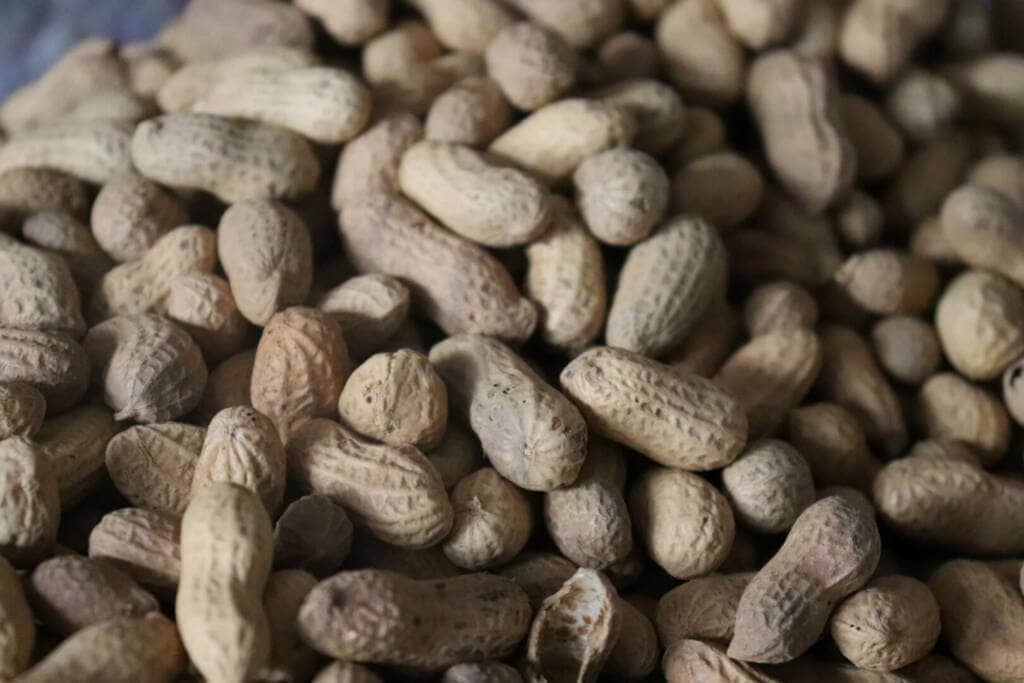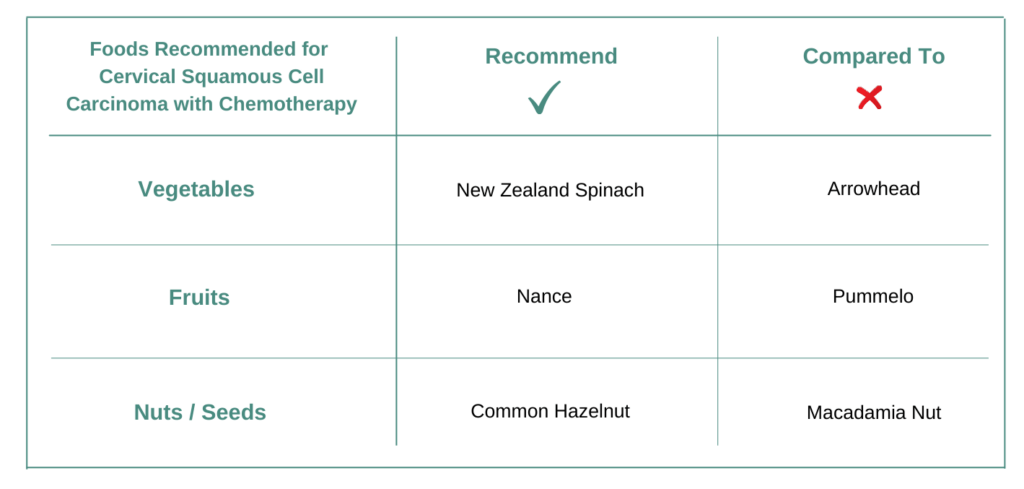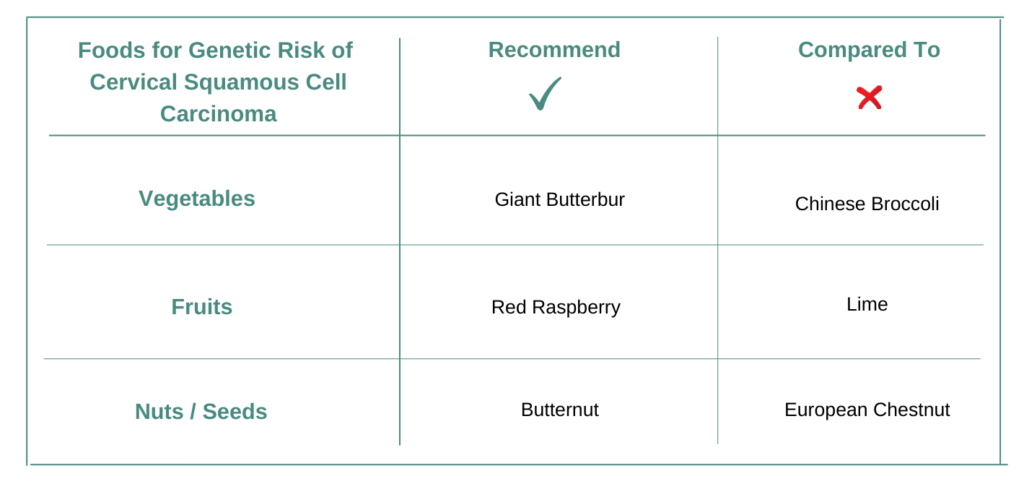Introduction
Foods for Cholangiocarcinoma should be personalized for each individual and also must adapt when cancer treatment or tumor genetic change. The personalization and adaptation must consider all the active ingredients or bioactives contained in different foods with respect to cancer tissue biology, genetics, treatments, lifestyle conditions and diet preferences. Hence while nutrition is one of the very important decisions for a cancer patient and individual at risk of cancer to make – how to choose foods to eat is not an easy task.
Cholangiocarcinoma is a cancer of the bile duct, a rare but aggressive cancer. Bile duct system is a series of tubes that begin in the liver where bile is made, and ends in the small intestines. Bile is a digestive enzyme that helps break down fats and digest foods. Cholangiocarcinoma that occurs in the bile duct inside the liver is called intrahepatic and if it occurs in the duct outside the liver, it is called extrahepatic cholangiocarcinoma. Being an aggressive cancer and diagnosed in late stages, cholangiocarcinoma has a poor prognosis with a 5-year survival rate of less than 10%. (American Cancer Society). It is a rare cancer but most common in people older than age 70 years. Symptoms of cholangiocarcinoma usually manifest in later stages of the disease, and they include a jaundice (yellowing of the kin and the whites of the eyes, itchy skin, dark colored urine), unintentional weight loss and abdominal pain. Treatment options for cholangiocarcinoma include adjuvant or palliative therapy with chemotherapy, immunotherapy, or targeted therapy. Supportive nutrition (foods and natural supplements) that are complimentary to the treatment plan can help with patient well-being.
For Cholangiocarcinoma does it matter what vegetables, fruits, nuts, seeds one eats?
A very common nutrition question asked by cancer patients and individuals at-genetic risk of cancer is – for cancers like Cholangiocarcinoma does it matter what foods I eat and which I do not? Or if I follow a plant-based diet is that enough for cancer like Cholangiocarcinoma?
For example does it matter if vegetable New Zealand Spinach is consumed more compared to Arrowhead? Does it make any difference if fruit Pummelo is preferred over Nance? Also if similar choices are made for nuts/seeds like Common Hazelnut over Macadamia Nut and for pulses like Black-eyed Pea over Lentils. And if what I eat matters – then how does one identify foods which are recommended for Cholangiocarcinoma and is it the same answer for everyone with the same diagnosis or genetic risk?
Yes! Foods you eat matters for Cholangiocarcinoma!
Food recommendations may not be the same for everyone and can be different even for the same diagnosis and genetic risk.

All foods (vegetables, fruits, nuts, seeds, pulses, oils etc.) and nutritional supplements are made up of more than one active molecular ingredient or bio-actives in different proportions and quantities. Each active ingredient has a unique mechanism of action – which can be activation or inhibition of different biochemical pathways. Simply stated foods and supplements which are recommended are those which do not cause an increase of molecular drivers of cancer but reduce them. Else those foods should not be recommended. Foods contain multiple active ingredients – hence when evaluating foods and supplements you need to consider the impact of all active ingredients cumulatively rather than individually.
For example Pummelo contains active ingredients Curcumin, Lycopene, Quercetin, Lupeol, Phloretin. And Nance contains active ingredients Curcumin, Lupeol, Phloretin, Daidzein, Formononetin and possibly others.
A common mistake made when deciding and choosing foods to eat for Cholangiocarcinoma – is to evaluate only selected active ingredients contained in foods and ignore the rest. Because different active ingredients contained in foods may have opposing effects on cancer drivers – you cannot cherry pick active ingredients in foods and supplements for making a nutrition decision for Cholangiocarcinoma.
YES – FOOD CHOICES MATTER FOR CANCER. NUTRITION DECISIONS MUST CONSIDER ALL ACTIVE INGREDIENTS OF FOODS.
Skills Needed for Nutrition Personalization for Cholangiocarcinoma?
Personalized nutrition for cancers like Cholangiocarcinoma consists of recommended foods / supplements; not recommended foods / supplements with example recipes which prioritize use of recommended foods. An example of personalized nutrition can be seen at this link.
Deciding which foods are recommended or not is extremely complicated, requiring expertise in Cholangiocarcinoma biology, food science, genetics, biochemistry along with good understanding of how cancer treatments work and associated vulnerabilities by which the treatments could stop being effective.
MINIMUM KNOWLEDGE EXPERTISE NEEDED FOR NUTRITION PERSONALIZATION FOR CANCER ARE: CANCER BIOLOGY, FOOD SCIENCE, CANCER TREATMENTS AND GENETICS.
Foods to Eat After Cancer Diagnosis!
No two cancers are the same. Go beyond the common nutrition guidelines for everyone and make personalized decisions about food and supplements with confidence.
Characteristics of cancers like Cholangiocarcinoma
All cancers like Cholangiocarcinoma can be characterized by a unique set of biochemical pathways – the signature pathways of Cholangiocarcinoma. Biochemical pathways like Cell Cycle, Nucleotide Metabolism, PI3K-AKT-MTOR Signaling, RAS-RAF Signaling are part of the signature definition of Cholangiocarcinoma. Each individual’s cancer genetics can be different and hence their specific cancer signature could be unique.
The treatments which are effective for Cholangiocarcinoma need to be cognizant of the associated signature biochemical pathways for each cancer patient and individual at genetic risk. Therefore different treatments with different mechanisms of actions are effective for different patients. Similarly and for the same reasons foods and supplements need to be personalized for each individual. Hence some foods and supplements are recommended for Cholangiocarcinoma when taking cancer treatment Cisplatin, and some foods and supplements are not recommended.
Sources like cBioPortal and many others provide population representative patient anonymized data from clinical trials for all cancer indications. This data consists of clinical trial study details like sample size / number of patients, age groups, gender, ethnicity, treatments, tumor site and any genetic mutations.
KRAS, SMAD4, MUC16, EPHA2 and RYR2 are the top ranked reported genes for Cholangiocarcinoma. KRAS is reported in 8.4 % of the representative patients across all clinical trials. And SMAD4 is reported in 6.7 %. The combined population patient data cover ages from 19 to 89. 55.5 % of the patient data are identified as men. The Cholangiocarcinoma biology along with reported genetics together define the population represented signature biochemical pathways for this cancer. If the individual cancer tumor genetics or genes contributing to the risk are also known then that should also be used for nutrition personalization.
NUTRITION CHOICES SHOULD MATCH WITH EACH INDIVIDUAL’S CANCER SIGNATURE.
Food and Supplements for Cholangiocarcinoma
For Cancer Patients
Cancer patients on treatment or on palliative care need to make decisions on food and supplements – for the needed dietary calories, for managing any treatment side effects and also for improved cancer management. All plant-based foods are not equal and choosing and prioritizing foods which are personalized and customized to ongoing cancer treatment is important and complicated. Here are some examples providing guidelines for making nutrition decisions.
Choose Vegetable NEW ZEALAND SPINACH or ARROWHEAD?
Vegetable New Zealand Spinach contains many active ingredients or bioactives such as Curcumin, Lycopene, Quercetin, Lupeol, Phloretin. These active ingredients manipulate various biochemical pathways like Inositol Phosphate Signaling, NFKB Signaling, JAK-STAT Signaling and Cell Cycle and others. New Zealand Spinach is recommended for Cholangiocarcinoma when ongoing cancer treatment is Cisplatin. This is because New Zealand Spinach modifies those biochemical pathways which have been scientifically reported to sensitize the effect of Cisplatin.
Some of the active ingredients or bioactives in vegetable Arrowhead are Curcumin, Lycopene, Lupeol, Phloretin, Daidzein. These active ingredients manipulate various biochemical pathways like Oxidative Stress, Epithelial to Mesenchymal Transition and DNA Repair and others. Arrowhead is not recommended for Cholangiocarcinoma when ongoing cancer treatment is Cisplatin because it modifies those biochemical pathways which make the cancer treatment resistant or less responsive.
VEGETABLE NEW ZEALAND SPINACH IS RECOMMENDED OVER ARROWHEAD FOR Cholangiocarcinoma AND TREATMENT Cisplatin.
Choose Fruit NANCE or PUMMELO?
Fruit Nance contains many active ingredients or bioactives such as Curcumin, Lupeol, Phloretin, Daidzein, Formononetin. These active ingredients manipulate various biochemical pathways like Inositol Phosphate Signaling, NFKB Signaling, Cell Cycle and Epithelial to Mesenchymal Transition and others. Nance is recommended for Cholangiocarcinoma when ongoing cancer treatment is Cisplatin. This is because Nance modifies those biochemical pathways which have been scientifically reported to sensitize the effect of Cisplatin.
Some of the active ingredients or bioactives in fruit Pummelo are Curcumin, Lycopene, Quercetin, Lupeol, Phloretin. These active ingredients manipulate various biochemical pathways like Oxidative Stress and others. Pummelo is not recommended for Cholangiocarcinoma when ongoing cancer treatment is Cisplatin because it modifies those biochemical pathways which make the cancer treatment resistant or less responsive.
FRUIT NANCE IS RECOMMENDED OVER PUMMELO FOR Cholangiocarcinoma AND TREATMENT Cisplatin.
Choose Nut COMMON HAZELNUT or MACADAMIA NUT?
Common Hazelnut contains many active ingredients or bioactives such as Curcumin, Lycopene, Quercetin, Lupeol, Phloretin. These active ingredients manipulate various biochemical pathways like Inositol Phosphate Signaling, NFKB Signaling, JAK-STAT Signaling and Cell Cycle and others. Common Hazelnut is recommended for Cholangiocarcinoma when ongoing cancer treatment is Cisplatin. This is because Common Hazelnut modifies those biochemical pathways which have been scientifically reported to sensitize the effect of Cisplatin.
Some of the active ingredients or bioactives in Macadamia Nut are Curcumin, Lupeol, Phloretin, Daidzein, Formononetin. These active ingredients manipulate various biochemical pathways like NFKB Signaling, PI3K-AKT-MTOR Signaling and DNA Repair and others. Macadamia Nut is not recommended for Cholangiocarcinoma when ongoing cancer treatment is Cisplatin because it modifies those biochemical pathways which make the cancer treatment resistant or less responsive.
COMMON HAZELNUT IS RECOMMENDED OVER MACADAMIA NUT FOR Cholangiocarcinoma AND TREATMENT Cisplatin.

For Individuals with Genetic Risk of Cancer
The question asked by individuals who have genetic risk of Cholangiocarcinoma or familial history is “What Should I Eat Differently from Before?” and how they should choose foods and supplements to manage risks of the disease. Since for cancer risk there is nothing actionable in terms of treatment – decisions of foods and supplements become important and one of the very few actionable things which can be done. All plant-based foods are not equal and based on identified genetics and pathway signature – the choices of food and supplements should be personalized.
Choose Vegetable GIANT BUTTERBUR or CHINESE BROCCOLI?
Vegetable Giant Butterbur contains many active ingredients or bioactives such as Curcumin, Apigenin, Formononetin, Lycopene, Lupeol. These active ingredients manipulate various biochemical pathways like Oxidative Stress, EPHRIN Signaling, PI3K-AKT-MTOR Signaling and P53 Signaling and others. Giant Butterbur is recommended for risk of Cholangiocarcinoma when associated genetic risk is EPHA2. This is because Giant Butterbur increases those biochemical pathways which counteract the signature drivers of it.
Some of the active ingredients or bioactives in vegetable Chinese Broccoli are Curcumin, Apigenin, Formononetin, Lupeol, Delphinidin. These active ingredients manipulate various biochemical pathways like Oxidative Stress and Stem Cell Signaling and others. Chinese Broccoli is not recommended when risk of Cholangiocarcinoma when associated genetic risk is EPHA2 because it increases the signature pathways of it.
VEGETABLE GIANT BUTTERBUR IS RECOMMENDED OVER CHINESE BROCCOLI FOR EPHA2 GENETIC RISK OF CANCER.
Choose Fruit RED RASPBERRY or LIME?
Fruit Red Raspberry contains many active ingredients or bioactives such as Curcumin, Ellagic Acid, Quercetin, Formononetin, Lupeol. These active ingredients manipulate various biochemical pathways like Oxidative Stress, Angiogenesis, PI3K-AKT-MTOR Signaling and P53 Signaling and others. Red Raspberry is recommended for risk of Cholangiocarcinoma when associated genetic risk is EPHA2. This is because Red Raspberry increases those biochemical pathways which counteract the signature drivers of it.
Some of the active ingredients or bioactives in fruit Lime are Curcumin, Formononetin, Lycopene, Lupeol, Delphinidin. These active ingredients manipulate various biochemical pathways like Oxidative Stress and others. Lime is not recommended when risk of Cholangiocarcinoma when associated genetic risk is EPHA2 because it increases the signature pathways of it.
FRUIT RED RASPBERRY IS RECOMMENDED OVER LIME FOR EPHA2 GENETIC RISK OF CANCER.
Choose Nut BUTTERNUT or EUROPEAN CHESTNUT?
Butternut contains many active ingredients or bioactives such as Curcumin, Apigenin, Formononetin, Lycopene, Lupeol. These active ingredients manipulate various biochemical pathways like Angiogenesis, RAS-RAF Signaling, PI3K-AKT-MTOR Signaling and P53 Signaling and others. Butternut is recommended for risk of Cholangiocarcinoma when associated genetic risk is EPHA2. This is because Butternut increases those biochemical pathways which counteract the signature drivers of it.
Some of the active ingredients or bioactives in European Chestnut are Curcumin, Ellagic Acid, Apigenin, Quercetin, Formononetin. These active ingredients manipulate various biochemical pathways like Oxidative Stress and Stem Cell Signaling and others. European Chestnut is not recommended when risk of Cholangiocarcinoma when associated genetic risk is EPHA2 because it increases the signature pathways of it.
BUTTERNUT IS RECOMMENDED OVER EUROPEAN CHESTNUT FOR EPHA2 GENETIC RISK OF CANCER.

In Conclusion
Foods and Supplements chosen are important decisions for cancers like Cholangiocarcinoma. Cholangiocarcinoma patients and individuals with genetic-risk always have this question: “What foods and nutritional supplements are recommended for me and which are not?” There is a common belief which is a misconception that all plant-based foods could be beneficial or not but would not be harmful. Certain foods and supplements can interfere with cancer treatments or promote molecular pathway drivers of cancer.
There are different types of cancer indications like Cholangiocarcinoma, each with different tumor genetics with further genomic variations across each individual. Further every cancer treatment and chemotherapy has a unique mechanism of action. Each food like New Zealand Spinach contains various bioactives in different quantities, which have an impact on different and distinct sets of biochemical pathways. The definition of personalized nutrition is individualized food recommendations for the cancer indication, treatments, genetics, lifestyle and other factors. Nutrition personalization decisions for cancer require knowledge of cancer biology, food science and an understanding of different chemotherapy treatments. Finally when there are treatment changes or new genomics is identified – the nutrition personalization needs re-evaluation.
The addon nutrition personalization solution makes the decision making easy and removes all the guesswork in answering the question, “What foods should I choose or not choose for Cholangiocarcinoma?”. The addon multi-disciplinary team includes cancer physicians, clinical scientists, software engineers and data scientists.
Personalized Nutrition for Cancer!
Cancer changes with time. Customize and modify your nutrition based on cancer indication, treatments, lifestyle, food preferences, allergies and other factors.
References
- Chol Tcga Pan Can Atlas 2018
- Cell-of-Origin Patterns Dominate the Molecular Classification of 10,000 Tumors from 33 Types of Cancer.
- Scalable Open Science Approach for Mutation Calling of Tumor Exomes Using Multiple Genomic Pipelines.
- Genomic and Functional Approaches to Understanding Cancer Aneuploidy.
- Driver Fusions and Their Implications in the Development and Treatment of Human Cancers.
- An Integrated TCGA Pan-Cancer Clinical Data Resource to Drive High-Quality Survival Outcome Analytics.
- Oncogenic Signaling Pathways in The Cancer Genome Atlas.
- Microbiome analyses of blood and tissues suggest cancer diagnostic approach.
- Perspective on Oncogenic Processes at the End of the Beginning of Cancer Genomics.
- Landscape of Microsatellite Instability Across 39 Cancer Types.
- Daidzein exerts anti-tumor activity against bladder cancer cells via inhibition of FGFR3 pathway.
- Negative regulation of signal transducer and activator of transcription-3 signalling cascade by lupeol inhibits growth and induces apoptosis in hepatocellular carcinoma cells.
- Lycopene Inhibits Activation of Epidermal Growth Factor Receptor and Expression of Cyclooxygenase-2 in Gastric Cancer Cells.
- Effects and significance of formononetin on expression levels of HIF-1α and VEGF in mouse cervical cancer tissue.
- α-Terpineol reduces cancer pain via modulation of oxidative stress and inhibition of iNOS.
- https://www.cancer.gov/types/liver/hp/bile-duct-treatment-pdq
- https://my.clevelandclinic.org/health/diseases/21524-cholangiocarcinoma
